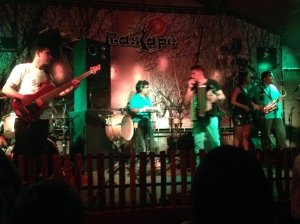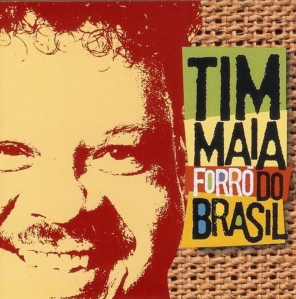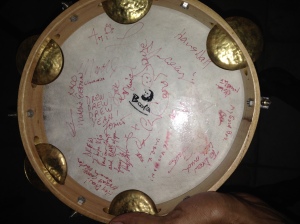The following is an article that appears in the latest issue of Soccer Journal, the official publication of the National Soccer Coaches Association of America (November / December 2014, Vol. 59, No. 7: pp. 60-62). I wrote the article while in Brazil during World Cup 2014. It is based on a working paper that I began while taking an Education Neuroscience class at Harvard Graduate School of Education.
 Our primary job as coaches is to make players better. Sure, some of us get paid to win games, but most of the coaches reading this article don’t have the luxury of dipping into the transfer market twice a year to go shopping. Instead, we’re in the business of player development, whether we coach youth teams or competitive college sides. Good coaches pride themselves on their ability to teach the technical, tactical, physical, and psychosocial sides of the game, yet we’re often frustrated by the challenge of helping players become “smarter.” This article provides some insights about how we can use educational neuroscience—more specifically, a phenomenon known as “perceptual learning”—to help improve the “soccer I.Q.” of our players.
Our primary job as coaches is to make players better. Sure, some of us get paid to win games, but most of the coaches reading this article don’t have the luxury of dipping into the transfer market twice a year to go shopping. Instead, we’re in the business of player development, whether we coach youth teams or competitive college sides. Good coaches pride themselves on their ability to teach the technical, tactical, physical, and psychosocial sides of the game, yet we’re often frustrated by the challenge of helping players become “smarter.” This article provides some insights about how we can use educational neuroscience—more specifically, a phenomenon known as “perceptual learning”—to help improve the “soccer I.Q.” of our players.
The best players are often labeled as having a higher “soccer I.Q.,” being more creative, or being able to "read the game." But what does that mean, and how do we help players develop those abilities? While we know how to teach core technical skills to a player, we struggle to find effective ways to help these young performers develop the soccer intelligence that can set them apart. Too often, these qualities are characterized as innate or un-teachable. Based on my experience and research, I believe that this is a cop out! In fact, we’re learning more everyday about how perceptual learning can help us tackle the challenge of coaching the soccer I.Q.
In neuroscience, perception—or the perceptual process—refers to our ability to filter and interpret the mountains of information that our environment throws at us every second. This information—in the form of light and sound, for example—is critical to our survival, but it’s only useful if we can focus on what is most important and ignore the rest. In this sense, soccer is truly the game of life. In the game situation, a soccer player must deal with constantly changing conditions and constraints, while processing and filtering information from countless sources in order to choose from among a limitless set of options. The player that chooses the best option—the player with the high soccer I.Q.—relies on stronger perceptual-cognitive skills to do so.
You probably won’t find the term “perceptual-cognitive skills” in any coaching manuals. However, these skills have a place within the existing framework for how we currently develop players. Traditionally, we focus on four areas of coaching: technical, tactical, physical, and psychosocial training. I propose that perceptual-cognitive skills, or the ability to read the game, be added to that list. Good perceptual-cognitive skills, when combined with knowledge of the game, enable effective tactical decision-making. In turn, when this decision-making is coupled with good technique, physical ability and mindset, the result is a great play!
***
VISUAL SERACH STRATEGIES
Higher performing players utilize more effective visual search strategies. These players have a better sense of where and when to look in order to collect valuable, actionable information. When a goal is scored due to poor marking, the at-fault defender is sometimes guilty of “ball-watching.” This is a prime example of an ineffective visual search strategy. While focusing on the attacking player with the ball, the defender fails to perceive other critical information—for example, the other attacker moving into a dangerous scoring position. Efficient visual search strategies allow players to constantly and rapidly gather information from multiple sources, enabling them to make better tactical decisions.
 Researchers, including Andre Roca of St. Mary’s University Twickenham London, have found that the visual search strategies of players differ based on the given situation. For example, in situations involving multiple players, higher performers take lots of short looks, or fixations, especially in peripheral areas. This helps them pick up and detect movement of multiple players spread across large spaces. In contrast, during 1 v 1 situations, good defenders focus in on the hip and foot areas of their opponents, while less skilled players stare at the ball.
Researchers, including Andre Roca of St. Mary’s University Twickenham London, have found that the visual search strategies of players differ based on the given situation. For example, in situations involving multiple players, higher performers take lots of short looks, or fixations, especially in peripheral areas. This helps them pick up and detect movement of multiple players spread across large spaces. In contrast, during 1 v 1 situations, good defenders focus in on the hip and foot areas of their opponents, while less skilled players stare at the ball.
They also found that a player’s distance from the ball determines the type of visual search strategy that is most effective. When the ball is further away, high performers use multiple, short-term fixations to gather information. This is similar to how drivers are taught to constantly scan the road up ahead while driving on a highway. In contrast, when in closer proximity to the ball, higher performers employ fewer fixations that last for longer periods.
One coach that has been putting these ideas to work is Leigh Sembaluk, whom I first met when we attended an NSCAA coaching course together in 2009. While working in the Vancouver Whitecaps academy, Leigh began to focus on the development of a particular perceptual-cognitive skill in his players. He found that the vast majority of players—even at the elite level—do not perform enough over-the-shoulder looks in order to gain information about what is going on behind them. Over the course of two minutes of natural play, he found that players, on average, checked over their shoulders only 2 to 3 times. Interestingly, female players tended to check more often. Essentially, Leigh explained, this means that most players have an inaccurate, or incomplete picture of the game... most of the time!
Since then, Leigh has been utilizing technology to develop this perceptual-cognitive skill in his players. Using a set of programable lights, Leigh constructs a training environment that pushes players to constantly check over their shoulders, and react to the information provided by the light signals. One practical application of this skill is to help players gather information before deciding which way to turn after receiving the ball. After Leigh’s intervention, players tended to check over their shoulder more than twice as often. In other words, they developed more effective visual search strategies, which allowed them to make smarter decisions.
POSTURAL CUES
The ability to read postural cues is easy to understand—high performers know how to read the body language of other players. Long before Shakira, good coaches have been teaching young players that “the hips don’t lie.” So, when defending an attacking player who has the ball, it is no surprise that high performers focus their visual search on this area because it is a good predictor of the attacking player’s next move. Reading postural cues is also a particularly valuable skill for goalkeepers during penalty shots, free kicks, and in open play. For example, when a right-footed player opens his or her right hip—even slightly—before striking the ball with the right foot, it often signals that the shot is heading to that player’s right.
.
PATTERN RECOGNITION & PREDICTING
High performers also demonstrate a stronger ability to recognize and recall patterns in context. “In context” means that this ability is dependent on the situation being soccer-relevant. For example, when shown an image of players distributed throughout a field in a plausible or logical arrangement, high performers can later recall more information about the locations of more players than their low-performing peers. However, if players are arranged randomly, in a manner that would not likely occur in a game situation, the high performer shows no greater recall ability when tested later. These findings parallel results from earlier research examining perceptual-cognitive skills in expert chess players.
This advanced pattern-recognition ability is closely tied with a higher ability to predict situational outcomes. Higher performers are quicker to identify patterns in the game, and are more likely to accurately anticipate what will happen next. For example, if a player can anticipate the movements other players, he or she can make a pass before a teammate is even open, beat an opponent to a spot on the field, or get into position to provide defensive cover.
These perceptual-cognitive skills are rooted in the neuroscience phenomenon known as “chunking.” This ability allows the perceiver to amalgamate bits of information into larger blocks, allowing for quicker processing. We are all expert “chunkers,” as long as we are operating within our area of expertise. For example, when we look at someone, we do not see a nose, mouth, eyes and ears—we see a face, and we recognize that person! The difference is that, through the development of context-specific perceptual expertise, high performing players are able to chunk information in the soccer environment, allowing them to read the game faster than others.
***
 The good news is that coaches actually can help young players develop valuable perceptual-cognitive skills. The obvious question is, “How do we do that?” Work done by Prof. Phil Kellman (UCLA) and his colleagues on perceptual learning in mathematics provides a helpful framework for tackling this challenge. They found that interventions known as perceptual learning modules (PLM), had a significant positive impact on students’ performance in algebra. The PLM approach emphasizes the importance of exposing learners to concepts through varied representations, as opposed to repetitive explanations. Instead of explicitly drilling content knowledge or skills, the PLM challenges the learner to access or retrieve relevant information to solve a given problem. Exposure to these PLMs, even in small doses, was correlated with higher performance when compared to subjects that had either no intervention, or one that utilized a more explicit skill-development approach.
The good news is that coaches actually can help young players develop valuable perceptual-cognitive skills. The obvious question is, “How do we do that?” Work done by Prof. Phil Kellman (UCLA) and his colleagues on perceptual learning in mathematics provides a helpful framework for tackling this challenge. They found that interventions known as perceptual learning modules (PLM), had a significant positive impact on students’ performance in algebra. The PLM approach emphasizes the importance of exposing learners to concepts through varied representations, as opposed to repetitive explanations. Instead of explicitly drilling content knowledge or skills, the PLM challenges the learner to access or retrieve relevant information to solve a given problem. Exposure to these PLMs, even in small doses, was correlated with higher performance when compared to subjects that had either no intervention, or one that utilized a more explicit skill-development approach.These results suggest that the key to perceptual-cognitive skill development may be repeated and varied exposure to scenarios that challenge young players to make decisions and to evaluate outcomes. Training exercises should give players a chance to experience and react to the patterns that occur most frequently in game scenarios. In practice, this means minimizing the time that players spend waiting in line or performing individual tasks without context. When coupled with effective feedback, this approach could help young players develop more effective perceptual-cognitive skills.
 What about coaching in the game? Well, one of the keys to developing perceptual-cognitive skills is trial and error—even during the game. Coaches—particularly youth coaches— must understand that every game is an opportunity for players to develop. Coaches should take advantage of the game environment and treat it as more than just a performance, or a test of the material that was covered during practice. Players must have repeated experience with decision-making based on what they perceive. It follows, therefore, that coaches should refrain from making these decisions for players during the game. The goal is not to develop players that are experts at following instructions—we want to develop players that become experts at reading the game for themselves. In an amusing, but true take on this idea, Prof. Williams suggests that “the saying ‘children should be seen but not heard’ should occasionally be extended to coaches." So, when an attacking player receives the ball in a good position to score, the coach must resist the urge to yell “shoot!” That player, through repeated exposure and practice, will develop the perceptual-cognitive skills to recognize when the time is right to shoot, pass, or dribble.
What about coaching in the game? Well, one of the keys to developing perceptual-cognitive skills is trial and error—even during the game. Coaches—particularly youth coaches— must understand that every game is an opportunity for players to develop. Coaches should take advantage of the game environment and treat it as more than just a performance, or a test of the material that was covered during practice. Players must have repeated experience with decision-making based on what they perceive. It follows, therefore, that coaches should refrain from making these decisions for players during the game. The goal is not to develop players that are experts at following instructions—we want to develop players that become experts at reading the game for themselves. In an amusing, but true take on this idea, Prof. Williams suggests that “the saying ‘children should be seen but not heard’ should occasionally be extended to coaches." So, when an attacking player receives the ball in a good position to score, the coach must resist the urge to yell “shoot!” That player, through repeated exposure and practice, will develop the perceptual-cognitive skills to recognize when the time is right to shoot, pass, or dribble.
Of course, there is an appropriate time for a coach to speak during the game. Conversations before the match are an important time to prepare players cognitively. Discussing some of the patterns that players will likely see is a good way to support their perceptual-cognitive development. This type of scaffolding may help players recognize the patterns more quickly. Again, helping players recognize the context in which events and decision-making occur is critical. White boards, cones, and other markers are popular tools that allow coaches to visually recreate scenarios, so that players can understand how to act or react appropriately to specific patterns in the game. The same strategy can be used during halftime and immediately after games to help players reflect on the situations that they have experienced. Coaches can facilitate this process by highlighting examples of effective decision-making, and by providing better alternatives for scenarios where players were not effective.
 Coaches can also benefit from a deeper understanding of how effective feedback works. Research by John Hattie and Helen Timperley of Auckland University in New Zealand provides an excellent framework for this discussion. First, the timing of feedback is critical. Unlike in training sessions, the in-game environment is not a time for task acquisition, it is an opportunity for players to develop perceptual-cognitive task fluency. Therefore, coaches should not necessarily provide immediate corrective feedback after a player makes a poor decision—in fact, Hattie and Timperley argue that this type of feedback may “detract from the learning of automaticity and the associated strategies of learning." By limiting the amount of immediate feedback we give our players, we can push them to really think through the scenario, and to develop a deeper understanding of what is going on. In other words, sometimes it is better to wait for halftime.
Coaches can also benefit from a deeper understanding of how effective feedback works. Research by John Hattie and Helen Timperley of Auckland University in New Zealand provides an excellent framework for this discussion. First, the timing of feedback is critical. Unlike in training sessions, the in-game environment is not a time for task acquisition, it is an opportunity for players to develop perceptual-cognitive task fluency. Therefore, coaches should not necessarily provide immediate corrective feedback after a player makes a poor decision—in fact, Hattie and Timperley argue that this type of feedback may “detract from the learning of automaticity and the associated strategies of learning." By limiting the amount of immediate feedback we give our players, we can push them to really think through the scenario, and to develop a deeper understanding of what is going on. In other words, sometimes it is better to wait for halftime. Finally, coaches should provide feedback in a way that encourages the self-regulation of players. The easiest way to do that is to offer feedback in the form of questions. For example, after a player gets caught out of position, a coach might call out, “Where should you have been?” This allows the player to access, or retrieve what they already know before they take another shot at solving the problem. Even if the player does not respond, the pondering of the question supports the development of his or her perceptual-cognitive skills. What if the player does not actually know the correct answer to the coach's question? Well, as Hattie and Timperley point out, feedback is most effective “when it addresses faulty interpretations, not a total lack of understanding." When a player does not actually know what they should be doing, it must be addressed in the training sessions using effective PLM strategies. Of course, a coach may choose to provide the answer during the game as a short-term solution.
Finally, coaches should provide feedback in a way that encourages the self-regulation of players. The easiest way to do that is to offer feedback in the form of questions. For example, after a player gets caught out of position, a coach might call out, “Where should you have been?” This allows the player to access, or retrieve what they already know before they take another shot at solving the problem. Even if the player does not respond, the pondering of the question supports the development of his or her perceptual-cognitive skills. What if the player does not actually know the correct answer to the coach's question? Well, as Hattie and Timperley point out, feedback is most effective “when it addresses faulty interpretations, not a total lack of understanding." When a player does not actually know what they should be doing, it must be addressed in the training sessions using effective PLM strategies. Of course, a coach may choose to provide the answer during the game as a short-term solution.Before wrapping things up, I want to emphasize that the perceptual learning approach is not the solution to every coach’s problems. Perceptual-cognitive development should be incorporated into training in a manner that supports, not supplants the development of critical technical skills. Well-designed perceptual learning modules can support the development of technical task fluency while exposing players to scenarios that help them build perceptual-cognitive skills. So, don’t throw out everything you’ve been doing and start getting all perceptual on your players—it won’t work, and they won’t like it. Instead, keep these ideas in mind, and try them out when the time is right.
Acknowledgements












 I got my first exposure to Forró over a decade ago when the Notorious D.A.D. brought back a handful of CD’s from a trip to Brazil. These are the kind of bands that you won’t find in the iTunes store or at
I got my first exposure to Forró over a decade ago when the Notorious D.A.D. brought back a handful of CD’s from a trip to Brazil. These are the kind of bands that you won’t find in the iTunes store or at 
 On top of the pandeiro, I tried out something that is easily 10 times more intimidating than trying to play the pandeiro—taking a class with
On top of the pandeiro, I tried out something that is easily 10 times more intimidating than trying to play the pandeiro—taking a class with 
 So now I know how I’ll be spending the next six weeks—that is, when I’m not watching the U.S., Colombia, and Brazil romp through each stage of
So now I know how I’ll be spending the next six weeks—that is, when I’m not watching the U.S., Colombia, and Brazil romp through each stage of 
























